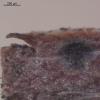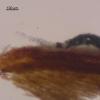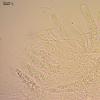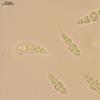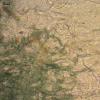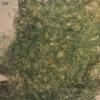
12-12-2025 18:39
Mirek GrycHello everyone.Macrofeatures similar to Mollisia b

09-12-2025 12:06
 Andgelo Mombert
Andgelo Mombert
Bonjour,Je recherche l'article concernant Hypobryo

07-12-2025 16:07
Arnold BüschlenHallo, ich habe in einer Moos-Aufsammlung (epiphy

08-12-2025 21:04
Mark Stevens"Hello everyone,I'm relatively new to microscopy (

08-12-2025 18:59
 Lothar Krieglsteiner
Lothar Krieglsteiner
.. found by a seminar-participant, I do not know t

08-12-2025 17:37
 Lothar Krieglsteiner
Lothar Krieglsteiner
20.6.25, on branch of Abies infected and thickened
previous post of Exarmidium diaphanum gave me a hint about the position of one my unidentified specimen,
it was collected on dead branch of Chamaedaphne calyculata (N61,063892° E69,455695°). There is, probably, candidate, E. ericae, which described from twigs of Erica carnea (the same family) - i am comparing it now.
Hymenium developing under the clypeus, flat, with tiny pore (30 mk), to 400 mk broad, 80 mk thick, clypeus bluish-brown.
Clypeus from host epidermis cells and mass of greenish-blue chains of cells (some symbiont), no fungal tissue presented in clypeus (? may be it is not right to say clypeus then); asci fissitunicate, not amyloid, enlarged at base and with obtuse tip, thick-walled apex, 76 (70-85) x 16 (14-17); paraphyses cylindrical, 1,3-1,5 mk thick, with some guttules, branched; spores fusoid, 3-4-celled, cells of released spores enlarged to round (and then overall shape with constrictions), with two short cylindrical outgrowths from both ends, content with several big and many small guttules, 23,7 (20,8-26,6) x 7,9 (6,4-9,2) (18 spores).
sorry, but I can't help you with this one.
But thank you for reminding of unfinished determinations:
http://www.ascofrance.fr/search_forum/11375?
I should keep this in mind next spring-summer.
Best wishes for your determination: Marja
